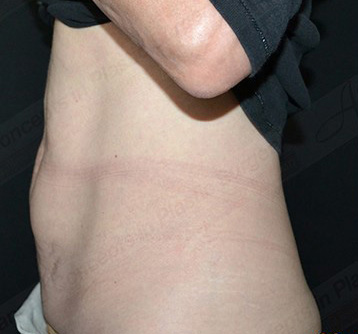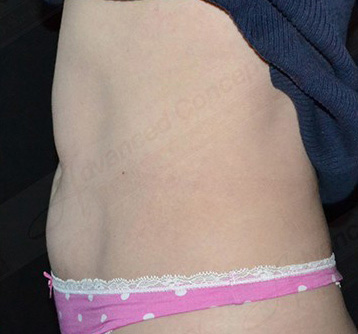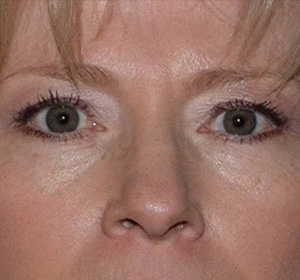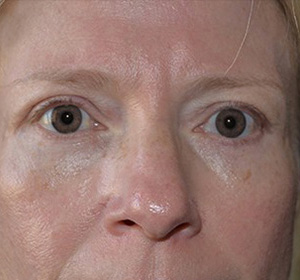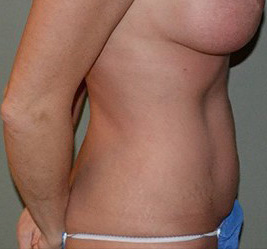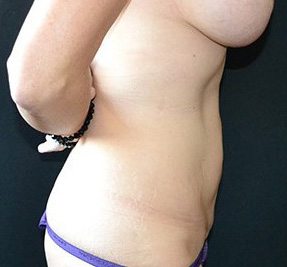Fat Grafting
Conveniently located to serve the areas of San Antonio, TX

Our San Antonio plastic surgery office is proud to offer Fat Grafting, one of the most advanced techniques available for the rejuvenation of and the correction of volume loss.
Fat Grafting is also called Fat Transfer because it involves transferring fat from one area of the body to another. You may also hear it referred to as Fat Injections. In all of these procedures, fat is taken from “problem areas” such as the tummy, love handles, muffin top, and thighs and placed in areas you want to improve. One of the many benefits is that the problem areas shrink and you get an overall better physique.
Contents
- 1 Treatment Areas
- 2 Procedure
- 3 FAQ
- 3.1 How long does the grafted fat last?
- 3.2 Are the scars from Fat Transfer noticeable?
- 3.3 How many times can Fat Grafting be done?
- 3.4 What are some of the risks of the Fat Transfer procedure?
- 3.5 How much does Fat Grafting cost?
- 3.6 Does insurance cover the cost of Fat Transfer?
- 3.7 Who is a Good Candidate for Fat Grafting?
Treatment Areas
FACE
Fat transferred to the face does especially well because of the great blood supply in the face. Typically fat can be used to restore volume much like a filler to aging cheeks and lips to give a natural look. Dr. Koneru even uses fat to help elevate brows. One benefit that we have noticed from fat, that you do not see with fillers, is the skin over the grafted fat is rejuvenated. Fat grafting has replaced the use of cheek implants and chin implants in many of our patients.
BREASTS
Fat grafting to the breasts is an advanced technique that should only be performed by a surgeon with a great deal of Fat Grafting experience. For patients who have undergone reconstructive surgery after breast cancer, Fat Transfer is a good way to help fill contour irregularities left by mastectomy or lumpectomy. Dr. Koneru often uses injected fat to help hide rippling from implants.
When combined with a Breast Lift or Mastopexy, Fat Grafting gives extra volume and can be used to help correct any size differences between the breasts.
For patients who desire slightly larger breasts and do not want implants, Fat Transfer can help add fullness. Dr. Koneru does not perform large volume transfer to the breasts, but it is possible to graft smaller volumes in several sessions.
It is also common for women who have had problems with implants to request Fat Grafting when downsizing their implants or to help with their revisionary surgery.
BUTTOCKS
Commonly referred to as a Brazilian Butt Lift, Fat Transfer is a good way to improve volume, contour, and texture of the buttocks. Unlike the breasts or face, large volumes of fat can be injected into the buttocks. Here again, it is essential that the procedure is performed by an experienced Board Certified Plastic Surgeon. There have been several media reports of death from Fat Grafting to the buttocks. Many of these unfortunate patients had surgery performed by non-plastic surgeons with big marketing budgets. The procedure should only be performed in an accredited hospital or surgery center.
HANDS
Filling the top of aging hands with fat can help give a more full, youthful, appearing hand. The sun damaged skin of the hand also improves with Fat Grafting. Combined with skin rejuvenation, years of aging and sun damage can be reversed.
RADIATION INJURY
One of the benefits of radiation therapy is that it kills cancerous cells. Unfortunately, one of the side effects is that it can damage good cells. Fat grafting can help soften some of that damage and help heal wounds that result from radiation therapy.
Procedure
The first part of the procedure involves precision liposuction with special instruments from the “problem areas” or donor sites. Dr. Koneru believes the harvest of the fat graft is a key part of the procedure. If harvested improperly, the fat cells may be traumatized and will not have as good “take”. Dr. Koneru has conducted extensive research and perfected his technique to maximize fat survival.

After the fat has been collected, it is washed and cleaned to remove blood and oils. Some surgeons continue to centrifuge the harvested fat to help with this stage. Dr. Koneru no longer uses the centrifuge because of the trauma suffered by the fat cells spinning at high speeds. Research has shown that centrifuged fat has lower survival rates.
Injecting the fat is done using multiple syringes with small cannulas or needles. Generally speaking, the fat graft is injected in 2 mm strips using multiple passes. These smaller strips make it easier for the graft to take and help maximize the result.
The procedure is usually done as an outpatient in the Surgery Center or Hospital. Occasionally, for small areas, Fat Transfer can be accomplished in the office. Most patients choose to have General Anesthesia although IV Sedation is a possibility. After surgery, there is usually a minimal amount of pain. Patients wear compression garments to cover the areas that were suctioned. The incisions may drain for a day or two, but are very small and are placed in easily hidden areas. After about two weeks, we begin lymphatic drainage techniques to the donor areas. Most patients take a long weekend off from work unless other surgeries are combined with the grafting.
FAQ
How long does the grafted fat last?
Once the fat graft has “taken” the results should last for several years. Resorption is a possibility, but with modern, advanced techniques, you should be able to get long lasting results. Some of the loss may be normal aging and fat atrophy, but it can always be redone or touched up.
Are the scars from Fat Transfer noticeable?
The scars from the liposuction are usually 5 to 10 millimeters long and are placed in areas that can be hidden easily. The fat injection sites are 1 to 2 millimeters and don’t even require stitches. These small holes heal without a noticeable scar.
How many times can Fat Grafting be done?
There is no limit to how often. As long as there is fat available to harvest, we can continue to graft.
What are some of the risks of the Fat Transfer procedure?
The risks are similar to those for liposuction. They include bleeding, bruising, contour irregularities, and skin changes. There is also the chance that only a small part of the graft will “take.” In these situations, you may require another Fat Grafting procedure or use of another filler. There is a possibility that the fat doesn’t survive and instead, you get hard knots (fat necrosis) or fat cysts (oil cysts). These risks are minimized by meticulous technique.
How much does Fat Grafting cost?
Pricing will vary depending on the amount of Fat Grafting, and the time it will take to perform the procedure. Generally speaking, the procedure costs start at $3000 but may be less if it can be performed in the office.
Does insurance cover the cost of Fat Transfer?
When Fat Grafting is done for reconstruction or wound healing, insurance will often cover the cost. Before surgery, we submit a letter with photos for preauthorization.
Who is a Good Candidate for Fat Grafting?
Anyone who is in overall good health and has realistic expectations is a candidate. You must have enough fat available for us to use to graft.
Interested in Fat Grafting? Call 210-499-5900 today for an Appointment and a Consultation to see if Fat Transfer is for you!

